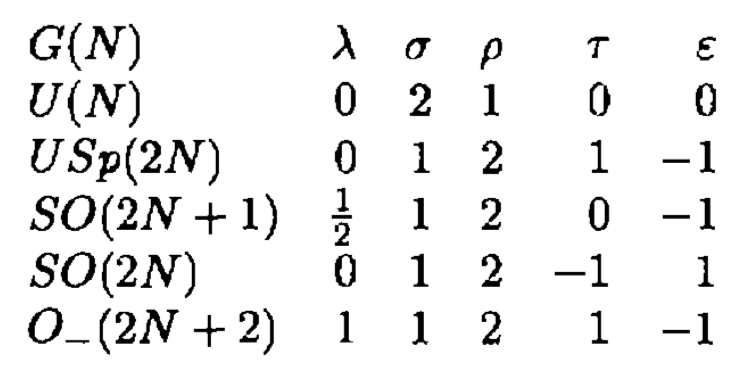It is well know that the Haar probability measure for the $U(N)$ group, given by $$ \begin{align} dX_{U(N)} & = \frac{1}{N!(2\pi)^N} \begin{vmatrix} 1 & 1 & \cdots & 1 & 1 \\ e^{i\lambda_1} & e^{i\lambda_2} & \cdots & e^{i\lambda_{N-1}} & e^{i\lambda_N} \\ e^{i2\lambda_1} & e^{i2\lambda_2} & \cdots & e^{i2\lambda_{N-1}} & e^{i2\lambda_N} \\ \vdots & \vdots & \ddots & \vdots & \vdots \\ e^{i(N-1)\lambda_1} & e^{i(N-1)\lambda_2} & \cdots & e^{i(N-1)\lambda_{N-1}} & e^{i(N-1)\lambda_N} \\ \end{vmatrix}^2 d\lambda_1\dots d\lambda_N \\ & = \frac{1}{N!(2\pi)^N} \prod_{1\leq j<k\leq N} |e^{i\lambda_j}-e^{i\lambda_k}|^2 d\lambda_1\dots d\lambda_N \end{align} $$ can also be expressed as a determinantal point process $$ dX_{U(N)} = \frac{1}{N!(2\pi)^N} \det_{NXN}(S_N(\lambda_j,\lambda_k))_{1\leq j,k\leq N} \text{ } d\lambda_1\dots d\lambda_N $$ where $$S_N(x,y)=\frac{\sin\frac{N(x-y)}{2}}{\sin\frac{x-y}{2}}$$ is the integral kernel function for the $U(N)$ group (a proof of this fact can be found, for example, in section 4.1 of this paper); similar kernels have also been found for the special orthogonal and symplectic groups.
My question is whether any analogous kernel function is know for the $SU(N)$ group ? (or if it can be proved that it doesn't exist).
If such a function $K(x,y)$ exists, it would allow one to express the $SU(N)$ Haar probability measure $$ \begin{align} dX_{SU(N)} & = \frac{1}{N!(2\pi)^{N-1}} \begin{vmatrix} 1 & \cdots & 1 & 1 \\ e^{i\lambda_1} & \cdots & e^{i\lambda_{N-1}} & e^{-i(\lambda_1+\ldots+\lambda_{N-1})} \\ e^{i2\lambda_1} & \cdots & e^{i2\lambda_{N-1}} & e^{-i2(\lambda_1+\ldots+\lambda_{N-1})} \\ \vdots & \ddots & \vdots & \vdots \\ e^{i(N-1)\lambda_1} & \cdots & e^{i(N-1)\lambda_{N-1}} & e^{-i(N-1)(\lambda_1+\ldots+\lambda_{N-1})} \\ \end{vmatrix}^2 d\lambda_1\dots d\lambda_{N-1} \\ & = \frac{1}{N!(2\pi)^{N-1}} \prod_{1\leq j<k\leq N-1} |e^{i\lambda_j}-e^{i\lambda_k}|^2 \prod_{1\leq j\leq N-1} |e^{i\lambda_j}-e^{-i(\lambda_1+\ldots+\lambda_{N-1})}|^2 d\lambda_1\dots d\lambda_{N-1} \\ % & = P(\lambda_1,\dots,\lambda_{N-1}) d\lambda_1\dots d\lambda_{N-1} \end{align} $$ in the form of $$ dX_{SU(N)} = \frac{1}{N!(2\pi)^{N-1}} \det_{(N-1)X(N-1)}(K(\lambda_j,\lambda_k))_{1\leq j,k\leq N-1} \text{ } d\lambda_1\dots d\lambda_{N-1} $$

